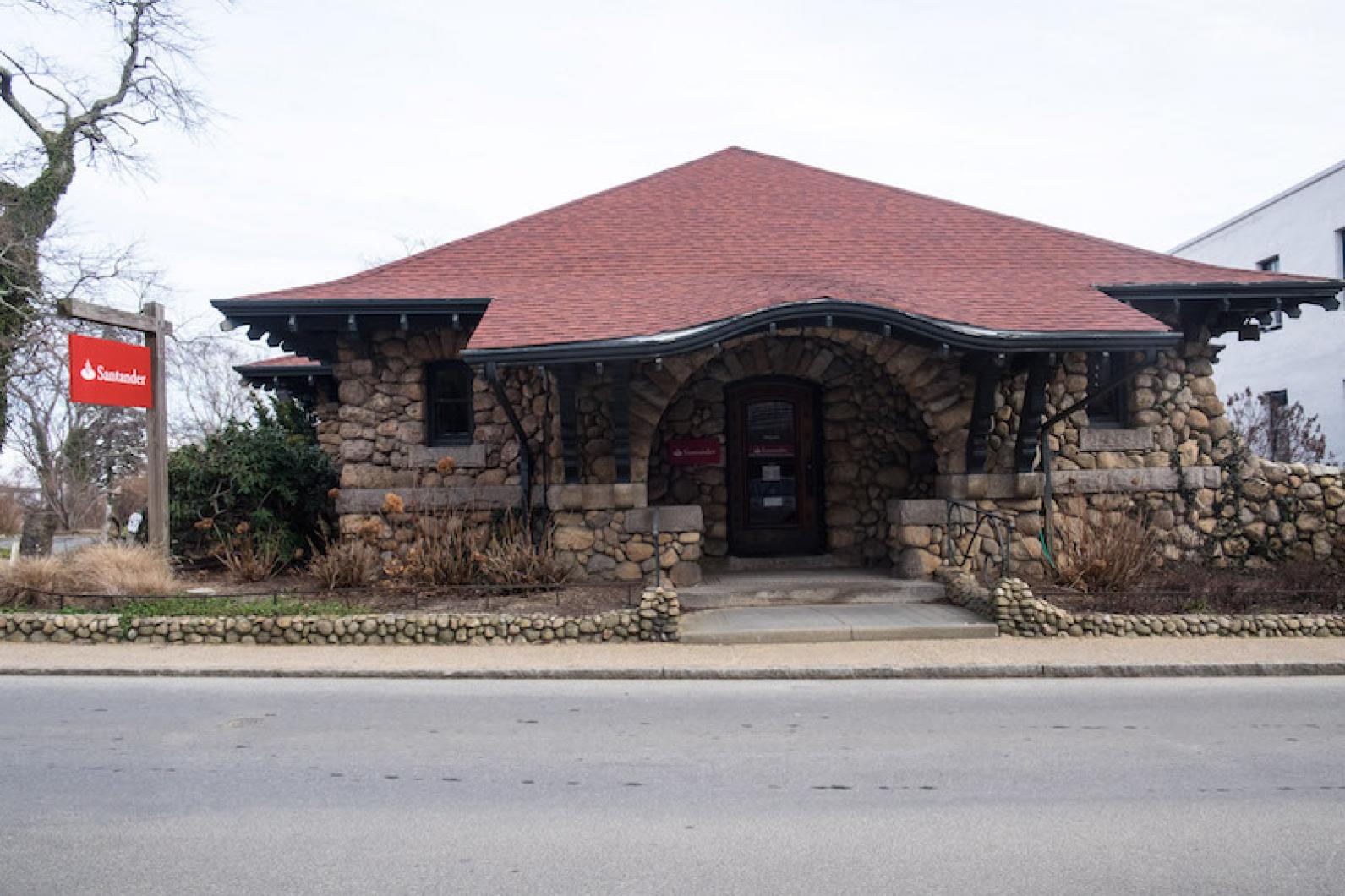The Martha’s Vineyard Commission voted unanimously Thursday to review the replacement of a Spanish tile roof on the historic Stone Bank in Vineyard Haven as a development of regional impact (DRI). The Main street bank is owned by Santander. The tiles on the bungalow-style building have already been replaced with red asphalt shingles.
The roofing project was under way last fall when town building inspector Ken Barwick referred it to the commission.
At a meeting two weeks ago, commissioners were unclear about whether they could review the project as a DRI since it was already finished, but chairman Jim Vercruysse said Thursday that attorneys for the commission had given the green light.
In a letter to the commission on Monday, Carole Berger, chairman of the Martha’s Vineyard Preservation Trust awards committee, noted that in 2004 the committee gave its annual award to Compass Bank in recognition of its stewardship of the 1905 building. Bank ownership has since changed hands and the building is now a Santander Bank.
“Replacement of the original Spanish-style terra cotta tile roof with asphalt shingles has amounted to the destruction of the fabric of the Island’s cultural heritage,” Mrs. Berger wrote, encouraging the commission to conduct a review. “As stated in our award, this important, pure arts and crafts design represents a brief but distinctive transitional phase in our Island’s architectural history.”
Commissioner Linda Sibley cited the MVC’s founding legislation in 1977, which aims to preserve and enhance the Island’s unique character. “This is one of those really unique buildings,” she said. “It’s very public.”
In other business Thursday, the commission voted to allow the Denniston House in Oak Bluffs to be torn down, ending a years-long debate over the house on Masonic avenue property that once served as a mission for Portuguese immigrants and was an early African American church on the Island.
A public hearing in January saw strong support for demolishing the 1895 house in light of its poor condition, longstanding vacancy and a potential for mixed-use development on the site which is zoned for residential and commercial use. The owner is Matt Viaggio.
The commission voted by a wide margin to allow the demolition, and also to end the property’s status as a development of regional impact (DRI), but only once a plaque is installed on the site to commemorate the history of the building, which among other things is included on the Martha’s Vineyard African American Heritage Trail.
Commissioner Joan Malkin welcomed the idea of a plaque. “We are losing the physical structure, but there will be ample recognition of its existence,” she said. She also noted that many objects from the house have been removed and added to the collection at the Martha’s Vineyard Museum.
But commissioner Fred Hancock bristled at the idea of allowing a historic property to be demolished for the sake of clearing a lot with no further plans by the applicant. “That is not a good precedent to set,” he said.
The commission voted 9-1 to allow the demolition, with Mr. Hancock dissenting.
The commission also voted unanimously to designate Manter’s Path in West Tisbury as a special way to protect it from future development. The 0.4-mile path runs northeast-southwest through woodlands between Tiah’s Cove Road and Blackthorne Road, and connects with Scrubby Neck Path, another special way to the north.
Katherine Upson, who lives on the byway, said efforts to protect the path began about a year ago, when the Sheriff Meadow Foundation leased a field it owns just north of the path to Morning Glory Farm for use as a hayfield. “I don’t think anybody is against it,” she said of the designation, although she said plans to use the field for agriculture had raised some concerns about the path being used for access.
Sheriff’s Meadow Foundation director Adam Moore said Friday that Morning Glory Farm will begin using the field in the spring, and that the foundation has no objections to designating the path as a special way.
The West Tisbury planning board nominated the path in December, noting its importance as part of an early network of trails in the area. Town voters must still decide whether to approve the designation, which would limit development within 20 feet of the center line on either side. As part of the nomination process, a moratorium on development began in January and will end with the town meeting vote in April.







Comments (16)
Comments
Comment policy »